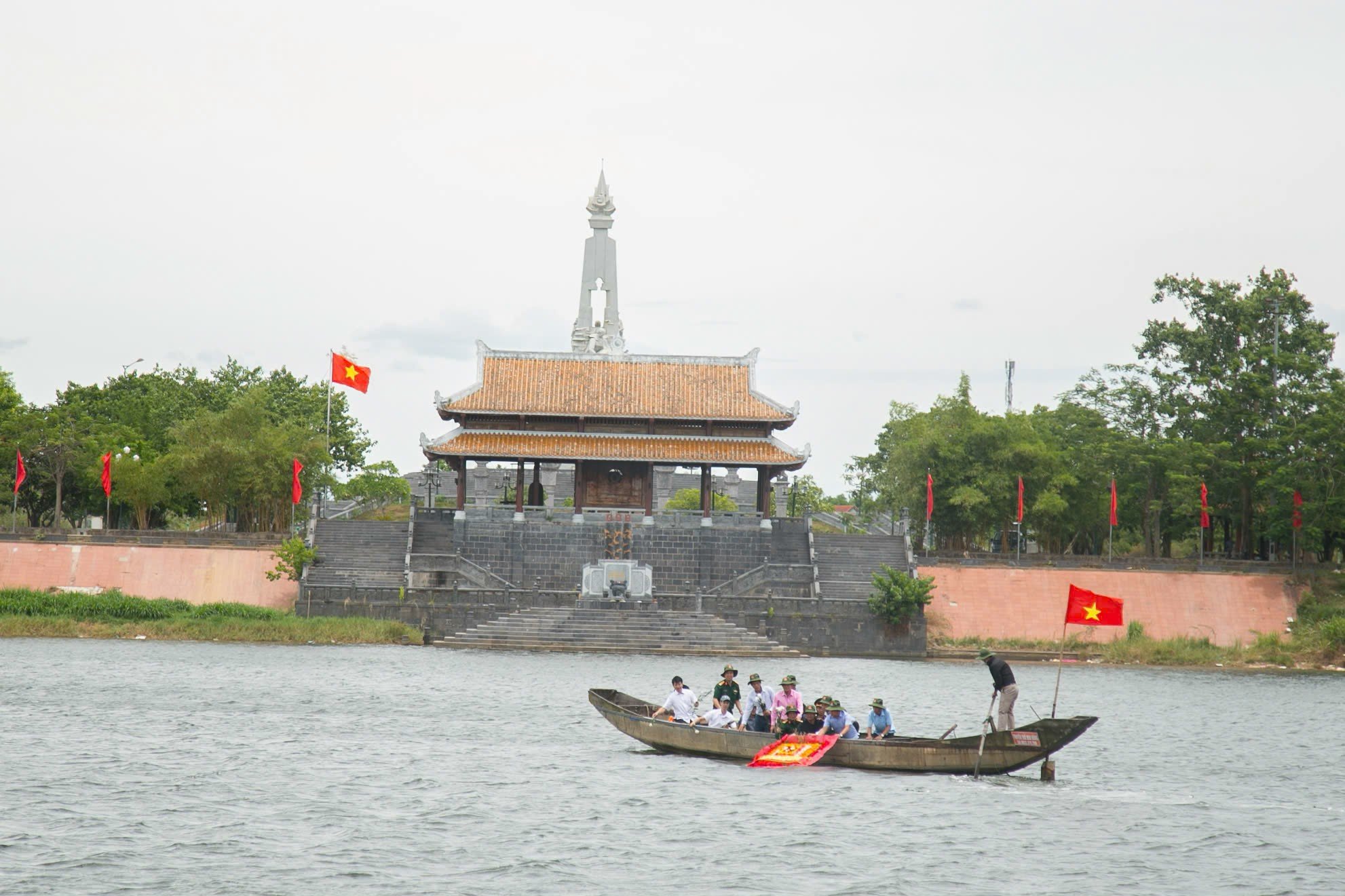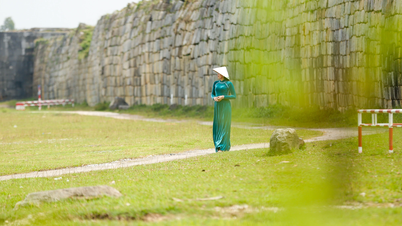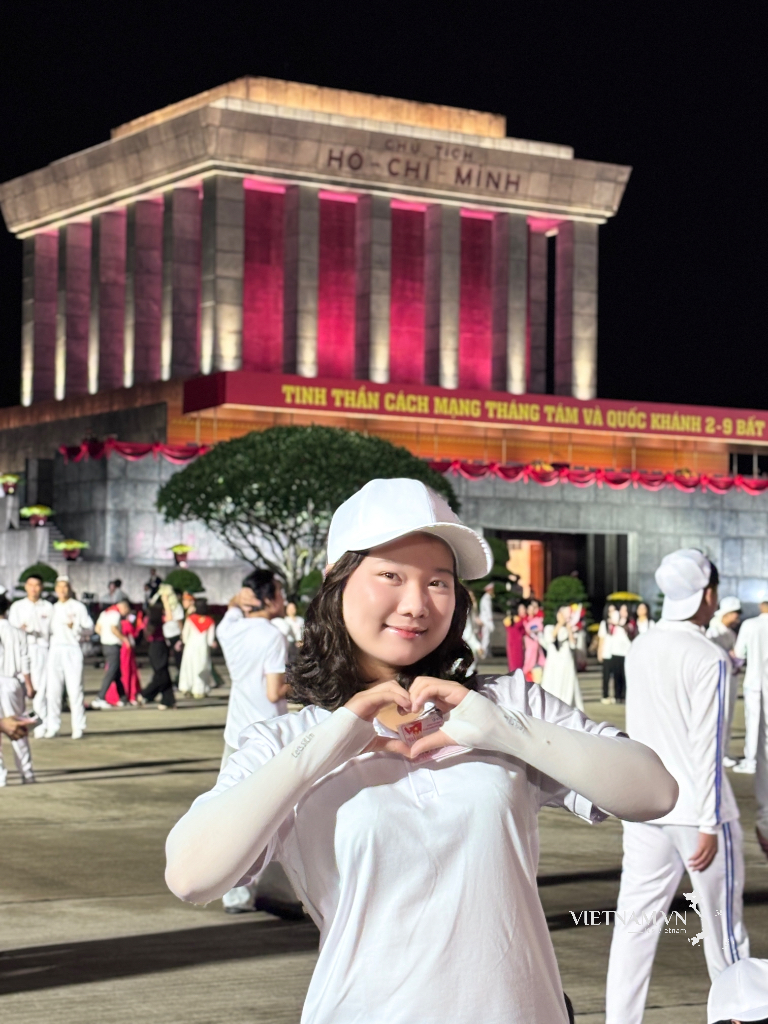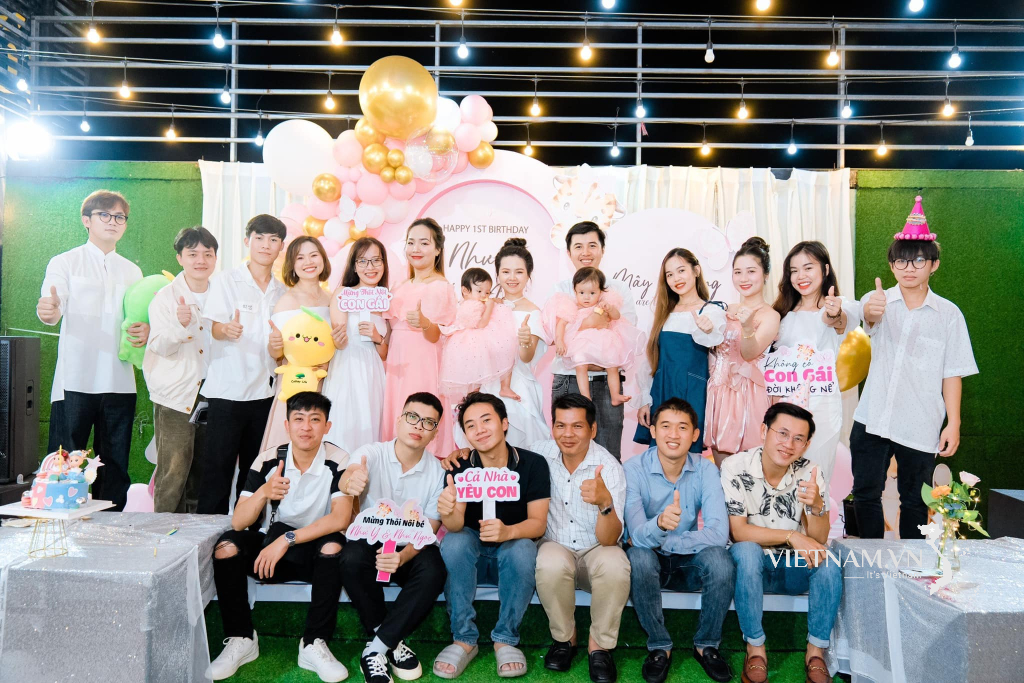Flower-releasing dock on the north bank of the Thach Han River - Photo: LE TRUONG
Flowing into the love story of Princess Huyền Trân
Going back in history, the Thach Han River today is the southern border between Dai Viet and the ancient Champa kingdom (1). During the Tran Dynasty (1225 - 1400), the northern and southern borders of Dai Viet were often harassed by foreign invaders. At that time, the Tran Dynasty built a very powerful army, and in about 30 years from 1258 - 1287, they defeated the Mongol-Yuan invaders three times. That invincible spirit made the Champa kingdom uneasy day and night, fearing that Dai Viet would annex them or that Dai Viet would allow the Yuan Dynasty to use their territory to attack. Champa sent envoys to negotiate, expressing their desire for a peaceful and friendly relationship between the two nations. In response, the Tran Dynasty maintained a flexible diplomatic attitude, working with Champa to build two peaceful and prosperous countries, developing trade, protecting the borders, and standing side by side against the threat of the Mongol-Yuan army in the North.
In 1301, Emperor Emeritus Tran Nhan Tong left Yen Tu to visit the Champa kingdom at the invitation of King Che Man (Jaya Sinhavarman III). A romantic king, knowing that the Tran dynasty had a young and beautiful Princess Huyen Tran, King Che Man proposed marriage, asking to become a son-in-law of Dai Viet. He offered many gifts, including a vast territory of over a thousand square miles encompassing the two provinces of O and Ly (from south of the Thach Han River to northern Quang Nam today). Emperor Emeritus Tran Nhan Tong agreed, promising to give the princess in marriage, believing that such a successful marriage would benefit the nation and forge a harmonious relationship between the two peoples.
Nevertheless, it wasn't until 1306, after many obstacles, that the love affair between Princess Huyền Trân and Chế Mân was finally approved by both courts. King Chế Mân, a valiant and adventurous man on horseback, personally went to the border region to fetch Princess Huyền Trân, held a grand wedding ceremony, and bestowed upon her the title of Queen Paramecvari.
The Đại Việt royal army escorted the princess across the Thạch Hãn River, taking over the two provinces of Ô and Lý, establishing Đại Việt's sovereignty . In 1307, the Trần dynasty renamed them Thuận and Hóa provinces. From then on, the Thạch Hãn River flowed into the history of the nation's territorial expansion, an expansion that did not involve warfare but was filled with the tears of Princess Huyền Trân when she married Chế Mân.
The people of Thuan and Hoa districts, remembering the contributions of Princess Huyen Tran, erected a temple in her honor in Kim Dau village, Cam An commune, Cam Lo district, on the banks of the Hieu River - a branch of the Thach Han River. In Hue, her temple is located in An Tay ward - also known as the Huyen Tran Cultural Center.
The two banks "Join hands in a great circle" (2)
History has been unfair in entrusting such a tragic mission to the rivers that lie between the two ends of the country, burdened with the weight of love.
After nine years of resistance against the French, the Geneva Accords (July 21, 1954) on ending the war and restoring peace in Indochina were signed, establishing the Ben Hai River (Quang Tri) as a temporary demarcation line, awaiting national reunification. However, the US broke its promise, invading the South with a neo-colonial policy. The Ben Hai River became the dividing line between North and South Vietnam for over 20 long years. The entire Vietnamese nation had to rise up again to wage the longest, most arduous, and fierce resistance war in its history against foreign invaders, with the burning desire that "Nothing is more precious than independence and freedom."
Then that day finally arrived. After the Spring-Summer Campaign of 1972, 85% of Quang Tri province and a large area of the southeastern region were liberated, forcing the parties to sign the Paris Agreement (January 27, 1973) ending the war, restoring peace in Vietnam, and recognizing Vietnam's independence, unity, and territorial integrity. But the Thach Han River was once again wracked with the pain of being divided into a temporary military demarcation line – also the place chosen for the exchange of prisoners of war according to a clause of the Paris Agreement.
History records the reunification of the banks of the Thach Han River when the last remaining territory of Quang Tri province was liberated on March 19, 1975. Following this, the Spring Offensive of 1975 achieved victory, completely liberating the South, unifying the country, and uniting the entire nation in a grand gesture.
Currently, on the north bank of the Thach Han River (between Ga Bridge and Thanh Co Bridge, in Nhan Bieu village), there is a monument and stele commemorating the historical event 52 years ago, in March 1973, when thousands of revolutionary soldiers, including Mr. Truong Tan Sang, former President of the Socialist Republic of Vietnam, who had been captured and imprisoned by the enemy, were released according to the Paris Agreement. They returned victorious.
Bathing in the cool breezes of the golden fields.
Overcoming immense difficulties to heal the wounds of war, the people of Thuan and Hoa districts of yesteryear refused to stand idly by while the green river flowed carelessly through the poverty of this land of hot winds and white sand. The idea of "making rain," of bringing the cool, fresh water of Thach Han to quench the thirst of the arid fields, which could only be cultivated once a year, began to take shape.
Turning dreams into reality, the large-scale project of the Tram Dam, blocking the Thach Han River, was decided upon by the then Binh-Tri-Thien province (now the three provinces of Quang Binh, Quang Tri, and Hue) to begin construction in early 1978. At that time, after the war, mechanized construction equipment was scarce, relying mainly on manual labor. More than 23,000 workers were mobilized for the project. Many young men enlisted in the army to defend the country, while others joined the youth volunteer force to work on irrigation projects, fueled by the fervent revolutionary spirit of youth.
Completed in 1981, the project brought water to irrigate the vast southern countryside of Quang Tri province, transforming tens of thousands of hectares of barren, drought-stricken rice paddies into fertile, productive fields, enabling multiple harvests per year. Wherever the Thach Han River flows, it brings new life, new happiness, and bountiful harvests of golden rice.
One early spring day, I went upstream to the Nhu Le ferry landing in my hometown. Here is the old landing, the old river where the farewell moments of the village girls saw the village boys off to war, to the southwestern border battlefield or to the northern border to drive out the invaders. And then one day, at this same river landing, only the figure of a village girl remained, sitting and watching the water flow by, sobbing and weeping because her lover had not returned! Ngo Hao, Phan Giap (3) ... and many young men fell on the battlefield for the country to be peaceful today.
Gazing at the riverbanks brimming with new life, my heart is filled with nostalgic memories, and I am silently grateful that the river of my motherland, which nurtured me into who I am today, flows through my veins. The river has flowed into the history of territorial expansion, flowing on with a triumphant anthem of national harmony, uniting our land and making it green and vibrant.
Nguyen Van Hau
Source: https://baoquangtri.vn/dong-song-chay-cung-lich-su-non-song-193548.htm




![[Photo] Prime Minister Pham Minh Chinh presides over the conference announcing the establishment of the International Finance Centre in Vietnam.](/_next/image?url=https%3A%2F%2Fvphoto.vietnam.vn%2Fthumb%2F1200x675%2Fvietnam%2Fresource%2FIMAGE%2F2025%2F12%2F21%2F1766309817714_ndo_br_dsc-3400-jpg.webp&w=3840&q=75)



![[Photo] Prime Minister Pham Minh Chinh presides over a meeting on private sector economic development.](/_next/image?url=https%3A%2F%2Fvphoto.vietnam.vn%2Fthumb%2F1200x675%2Fvietnam%2Fresource%2FIMAGE%2F2025%2F12%2F20%2F1766237501876_thiet-ke-chua-co-ten-40-png.webp&w=3840&q=75)



























































































Comment (0)